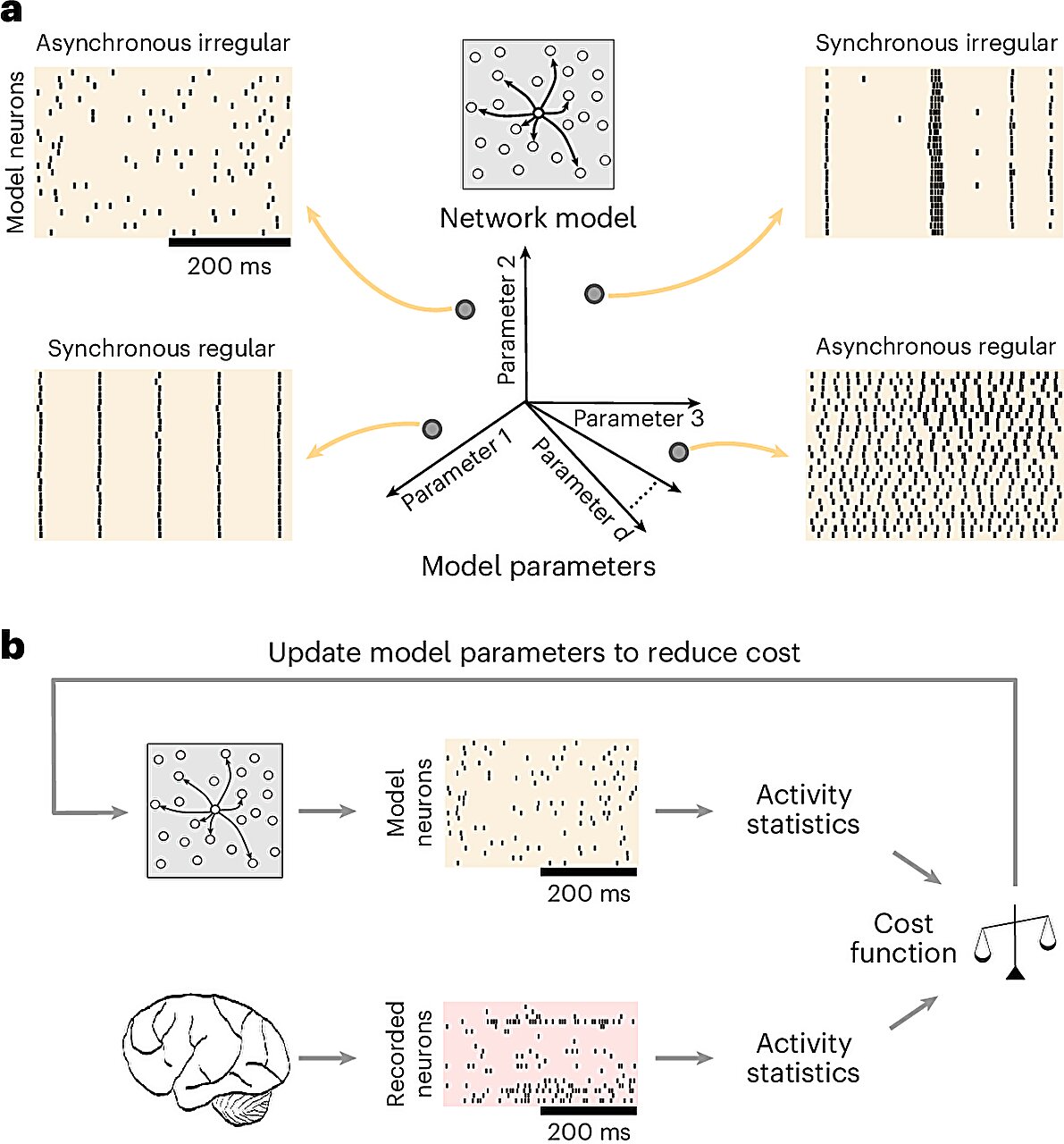Spiking Network Optimization Using Population Statistics (SNOPS): A Machine Learning-Driven Framework that can Quickly and Accurately Customize Models that Reproduce Activity to Mimic What’s Observed in the Brain

Building massive neural network models that replicate the activity of the brain has long been a cornerstone of computational neuroscience’s efforts to understand the complexities of brain function. These models, which are frequently intricate, are essential for comprehending how neural networks give rise to cognitive functions. However, optimizing these models’ parameters to precisely mimic observed brain activity has historically been a difficult and resource-intensive operation requiring much time and specialized knowledge.
A new AI research from Carnegie Mellon University and the University of Pittsburgh introduces a machine learning-driven framework called Spiking Network Optimisation using Population Statistics (SNOPS) that holds the potential to transform this process completely. SNOPS has been developed by an interdisciplinary team of academics from Carnegie Mellon University and the University of Pittsburgh.
Because of the framework’s automation of customization, spiking network models can more faithfully replicate the population-wide variability seen in large-scale neural recordings. In neuroscience, spiking network models, which mimic the biophysics of neural circuits, are extremely useful instruments. On the other hand, their intricacy frequently presents formidable obstacles. These networks’ behavior is extremely sensitive to model parameters, which makes configuration difficult and unpredictable.
SNOPS automates the optimization process to address these issues directly. Building such models has traditionally been a manual process that takes a lot of time and domain expertise. The SNOPS approach finds a larger range of model configurations that are consistent with brain activity automatically, in addition to being quicker and more potent. This feature makes it possible to study the behavior of the model in greater detail and reveals activity regimes that might otherwise go unnoticed.
SNOPS’s capacity to match empirical data and computational models is one of its most important features. It makes use of population statistics from extensive neural recordings to adjust model parameters in a way that closely matches the patterns of actual activity. The study’s use of SNOPS on brain recordings from macaque monkeys’ prefrontal and visual cortices proved this. The findings have demonstrated the need for more complex methods of model tweaking by exposing unidentified limitations of the spiking network models already in use.
The creation of SNOPS is evidence of the effectiveness of cross-disciplinary cooperation. By combining the skills of modelers, data-driven computational scientists, and experimentalists, the study team was able to develop a tool that is useful for the larger neuroscience community in addition to being unique.
SNOPS has the potential to have a big impact on computational neuroscience in the future. Because it is open-source, researchers from all over the world can use and improve upon it, which may yield new understandings of how the brain functions. With SNOPS, a configuration that captures all the needed aspects of the brain’s activity can be easily found.
In conclusion, SNOPS offers a strong, automated method for model tweaking, marking a significant advancement in the creation of large-scale neural models. Through SNOPS, the complexity of brain function can be better comprehended and ultimately advance the understanding of the most complex organ in the human body by bridging the gap between empirical data and computer models.
Check out the Paper. All credit for this research goes to the researchers of this project. Also, don’t forget to follow us on Twitter and join our Telegram Channel and LinkedIn Group. If you like our work, you will love our newsletter..
Don’t Forget to join our 50k+ ML SubReddit
⏩ ⏩ FREE AI WEBINAR: ‘SAM 2 for Video: How to Fine-tune On Your Data’ (Wed, Sep 25, 4:00 AM – 4:45 AM EST)
Tanya Malhotra is a final year undergrad from the University of Petroleum & Energy Studies, Dehradun, pursuing BTech in Computer Science Engineering with a specialization in Artificial Intelligence and Machine Learning.She is a Data Science enthusiast with good analytical and critical thinking, along with an ardent interest in acquiring new skills, leading groups, and managing work in an organized manner.













